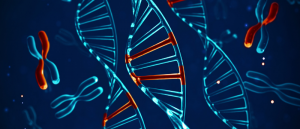Personalized treatment options are changing the way cancer patients get care, and next-generation sequencing (NGS) is a big part of that process. It provides oncologists with detailed information on the patient’s tumor, which can lead to a more efficient treatment plan with fewer side effects. What is the current impact of NGS, and what does the future look like?
What is Next Generation Sequencing?
NGS is a technique for identifying the sequence of DNA or RNA to explore genetic variations in an illness like cancer. It can provide detailed information on a patient’s tumor, allowing oncologists to highlight treatment response biomarkers and target the disease in a personalized way.

The commercialization of NGS started in 2005 with English biochemist Frederick Sanger. In the 1950s, Sanger began exploring the idea of sequencing RNA molecules. Later, he furthered his research to include DNA. Today, Frederick Sanger is called the father of sequencing because of his work.
What Is the Importance of NGS for Cancer Patients?
NGS is a valuable method for getting a more accurate look at the genetic makeup of an individual tumor. This in-depth understanding of the tumor leads to targeted therapies that can improve the quality of life for those with cancer and increase their likelihood of remission. NGS-driven companion diagnostics are generally expected to dictate therapy selection in the future to improve patient outcomes.
When compared to previous approaches, next generation sequencing provides benefits in terms of accuracy, sensitivity, and speed, and it can have a substantial influence on cancer care. Because NGS can evaluate several genes in a single experiment, it reduces the need to request additional tests to find the causing mutation.
How Expensive is NGS Testing?
Many factors make up the cost of this testing and whether it is a manageable expenditure in health care. These factors include the health care system and the payment method.
The type of cancer can make a difference, as well. Payment providers might access the benefits of NGS and determine the cost will save them money on the overall treatment. For example, lung cancer and NGS panels might save money by lowering the overall time to answer questions, or liquid biopsies could save money by avoiding a patient’s treatment.
The suppliers, who set reagent pricing based on what the market will allow, are primarily responsible for the expenses. This reflects the value of the test and, more importantly, the reimbursement and prices of rivals’ reagents. When two tests of equivalent value are presented, cost becomes a consideration. Other considerations include platform and workflow uniformity.
Access to NGS panels will grow as NGS panel validation improves over time and the FDA and CDC are considering more applications, owing to the apparent therapeutic advantages.
What is the Future of NGS?
At this point, the future looks bright for next generation sequencing technology. The decrease in cost and speed of sequencing has fueled its utilization. According to some estimates, the worldwide market would increase from $5.9 billion in 2020 to $23 billion by 2025, as reported by Chemistry World.